|
JOINT COMMISSION WORKING GROUP ON
UNDER-REPRESENTED GROUPS IN SURVEYING
 Visit the Web site of the
FIG Working Group on Under-represented Groups in Surveying
Visit the Web site of the
FIG Working Group on Under-represented Groups in Surveying
 This Newsletter in -pdf-format
This Newsletter in -pdf-format
Contents
FIG Congress 2006 in Munich Germany, 8-13 October
2006, by Gabriele Dasse, Germany
Women who are Leaders in the GPS Industry,
by Wendy J. Woodbury Straight, L.S., USA
Projecting the Image of the Nigerian Female
Surveyor, by Angela Kesiena Etuonovbe LSM., Nigeria
What’s going on in Germany? Or Let’ talk about us?,
by Jennifer Maldar, Germany
California State Lands Commission, by
Kelly Olin, USA
FIG Congress 2006 in Munich Germany,
8-13 October 2006
by Gabriele Dasse, Germany
On Sunday the General Assembly endorsed the FIG policy paper on
enhancing the representation of under-represented groups in FIG and to use
its recommendations as guidelines when preparing FIG policies and events.
This document is available as publication Nr. 35 here:
http://www.fig.net/pub/figpub/pub35/figpub35.htm.
The minutes of the General Assemble are available on
http://www.fig.net/admin/ga/2006/minutes.htm The FIG policy paper on
enhancing the representation of under-represented groups in FIG was topic
17 on the agenda.
Now all institutions of FIG have to deal with this topic and it is no
more only the task of a working group. I proceed from the assumption that
the Council will observe the implementation and that all members of the
network will keep an eye on it. Many thanks again for all the
contributions and the support I got. This publication highlights the end
of my activities for FIG and the German association DVW after nine
interesting and enriching years. I am very grateful for the financial and
personal support of DVW and the opportunity to be a member and during the
last 4 years the chair the German Study Group 1 “Profession”. In
the meantime I left the Surveying profession and it is part of our DVW-regulations
that after 8 years there should be a change. For the network was so
successful I hope that someone will take over the Newsletter. An editor is
needed to ask for articles, to coordinate and to bring together the edited
articles in one document. I got the confirmation from FIG Director
Markku Villikka that the FIG Office will handle the mailing list and
the publication on the FIG home page.
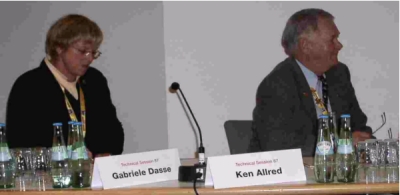
During the FIG Congress 2006 in Munich Germany, the Working Group got the
opportunity to present papers during the session “Under-represented
Groups and Ethics”. This session was chaired by Mr. Ken Allred,
Vice President of FIG (Canada).
After an interesting presentation from Mr. Haim Srebro (Israel)
about Professional Practice Based on Education, Ethics and Standards we
had 3 excellent gender based presentations from Ms. Jennifer Maldar
(Germany) “Let's Talk about Us!”, Mrs. Angela Etuonovbe
(Nigeria) “Improving Participation of Under-represented Groups –
Projecting the Image of the Nigerian Female Surveyor” and Ms. Gerda
Schennach (Austria) “Gender Issues for Land Registration and
Professional Qualification”. They highlighted, among other subject,
the importance of networking. Summaries of the papers from Angela
Etuonovbe and Jennifer Maldar are published with this Newsletter. For me
it was a pleasure to present publication Nr. 35: Enhancing the
Representation of Under-represented Groups in FIG.
Women who are Leaders in the GPS
Industry
by Wendy J. Woodbury Straight, L.S., USA
Among 56 industry leaders featured in the May, 2006 issue of GPS World
magazine were Elizabeth Cannon and Penina Axelrad, both of
whom are well known to whose who support the recruitment of women into the
surveying and mapping fields.
Cited by GPS World for their technical research within the GPS
industry, Cannon and Axelrad are both well known educators. Cannon is a
professor and department head in Geomatics Engineering at the Schulich
School of Engineering of the University of Calgary, Canada. Axelrad is a
professor and associate chair in Aerospace Engineering Sciences at the
Colorado Center for Astrodynamics Research of the University of Colorado,
USA.
Cannon has actively recruited new graduate students at Calgary, which
is a key source for highly trained GPS/GNSS specialists. The focus of her
own research is currently vehicle positioning systems that integrate GPS
with low-cost inertial systems and dead-reckoning sensors, including the
analysis of the new GPS and Galileo signals for use in precise
positioning.
Axelrad teaches satellite navigation and is involved with
multidisciplinary research teams. Also, in an outreach effort for the
science education of children in Kindergarten through Grade 12, she has
used GNSS to strengthen math and engineering skills at those age levels.
Axelrad’s technical research explores the uses of GPS bistatic radar to
augment aircraft safety and make scientific measurements of the Earth from
airborne platforms.
Among other women joining Cannon and Axelrad in GPS World’s list of
industry leaders were Karen Van Dyke, Ann Ciganer, Diane
Cornish, Carolyn P. McDonald, and Marie Lage. Van Dyke
is a technical expert for GPS at the RITA/Volpe Center of the U.S.
Department of Transportation, where she helps coordinate GPS research at
all levels of the organization. Ciganer is an executive director for the
U.S. GPS Industry Council and a vice president of Strategic Policy at
Trimble, serving in both capacities as an advocate for all GPS issues.
Cornish is the Director of Navigation Programs for Lockheed Martin
Integrated Systems and Solutions, where she leads a team with deep GPS
expertise and also explores the partnerships for interoperability
solutions between GPS and Galileo. McDonald is President of NavtechGPS and
has been instrumental in GPS/GNSS educational services, with plans for
E-learning and for a partnership with a European organization to present
training courses for the industry.
Lage is the owner of Dynamic Analytical Solutions, supporting NavAir in
the development of the U.S. Navy systems, and serving as chief engineer
for the demonstration of automated aerial refuelling for application to
unmanned aerial vehicles. GPS World noted that these seven women, together
with the 49 men chosen for the leadership feature, represent persons in
the navigation field who continuously strive to extend the industry’s
research initiatives. GPS World is a trade journal published monthly by
the Questex Media Group, Inc. of Newton, MA, USA.
Wendy J.W. Straight; Professional Land Surveyor, USA
E-mail: wendy@netsync.net
Improving Participation of
Under-represented Group: Projecting the Image of the Nigerian Female
Surveyor
by Angela Kesiena Etuonovbe LSM., Nigeria
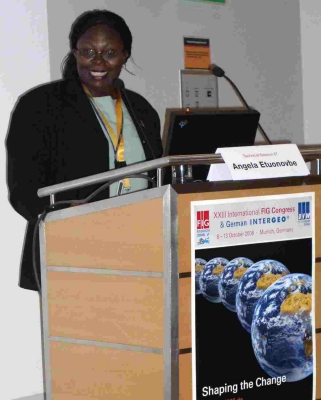 |
Introduction
Every community of persons has a potential for conflict. In other
words every community of persons suffers a capacity for conflict.
Selfless disposition makes for a more potentially purposeful and
united community. It is the absence of this posture in the community
that we find domination, intimidation, competition, frustration and
retaliation among the sexes. This in no small way, causes much
unhappiness and dissatisfaction in the polity. Unfortunately the woman
is the most hit.
Surveyors Education/Training
The Training does not segregate among sexes. It as much as possible
encourage both sexes male and female into the profession. What happens
after graduation? This is stage where some females are singled out as
incapable for the job requirements. |
Women – In – Surveying (WIS)
An umbrella organization under the Nigerian Institution of Surveyors
for women (NIS).
Its mission is that women shall form at least 30% of the total membership
of the NIS, and actively participate in all NIS programmes.
Prior to WIS, female surveyors constitutes only 3% of the total
membership of NIS and are hardly seen to participate in the affairs of the
institution (NIS). With the establishment of WIS participation has
increased from 3% to 8%. This figure still poor, Women–In–Surveying still
have a lot to do to achieve their vision.
Amongst others WIS intends to:
- Organize workshops/Seminar to create awareness in the profession for
the young ladies at every Annual General Meeting (AGM) of NIS in the
hosting region and zones.
- Massively mobilize women graduating from higher institutions as
surveyors to register as members of NIS and WIS.
- Encourage more women to attempt the surveyors Council of Nigerian (SURCON)
Examination and aspire to get registered.
- Encourage more women to venture into private practice.
- Formulate and cause to be implemented ideas and policies that will
improve the image of the female surveyor.
- Cause to be established a special scholarship fund for young girls
who are reading Surveys and Geometrics in our institution of higher
learning.
Problems and Challenges of the Nigerian Female Surveyors
- Outright discrimination (during interviews for employment as well as
depriving them from field work).
- The inability to differentiate between their status duties and their
working responsibilities (they are regarded as a weaker sex).
- Sheer laziness and indifferences of some class of women.
- Lack of knowledge about survey, how it operates and what it has to
offer. (Many Nigerian female surveyors did not have prior knowledge of
what surveying was).
Tips on the Usefulness of a Female Surveyor
- Proficient in resolving Disputes (Litigation Survey)
- Good Conflict Managers (Strong Bargaining powers)
- The needed care of diligence the profession entails
The Way Forward
- Education (enhances the quality and standard of life of every
citizen regardless of gender).
- Continuous Enlightenment and Mobilization (follow-up actions to all
regional workshops in order to actualize the goals of WIS.
- Removing self imposed barriers – what a man can do a woman can do
better.
- Image improvement-to be the best for the enhancement of the
profession.
- Encouragement – everyone needs this to excel in life.
Conclusion and Recommendations
I have no doubt in my mind that the on going effort to redress the
situation of gender inequality in our system is a positive development.
The removal of gender discrimination in the rules and regulations and
policies in the Civil Service in Nigeria will no doubt help develop the
potentials of women to put in their best in their chosen field of human
Endeavour.
Surveying is an important aspect of human development. The Nigerian
Institution of Surveyors has created an enabling environment for the
participation of Women-In-Surveying. This could be used in achieving the
aim of the Nigerian female surveyors.
When you are a woman in a male-dominated industry, you have to carve a
niche for yourself in order to succeed. You do not have to behave as if
you are a man or have to imitate your male counterpart. You have to be
yourself, and be the woman you are. When you do this, the sky will be your
limit.
Angela Kesiena Etuonovbe, AnGene Surveys & Consultants, Nigeria
E-mail: aetuonovbe@yahoo.com
What’s going on in Germany? Or Let’
talk about us?
by Jennifer Maldar, Germany
In a booklet of the German statistic government „Women in Germany
2006“, is following written:
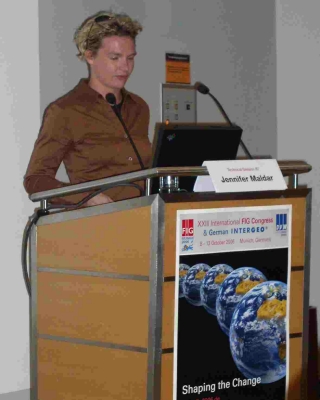 |
In the European Union (EU) Germany lies in a mid of the
employed rate of the active women (59%), the age is between 15 and 64
Years. The best countries are Denmark with 72%, Sweden with 71% and
the lowest are Italian and Greek with 45%. In Germany the employment
rate of activity and committed women are in March 2004 around 45%,
that’s 16 Million from overall 35.7 Million People who lives in
Germany. 42% there work less than a full working day. In our technical
professional circles less than 10% of women get the chance to for an
apprenticeship. A technical Scholastic, an example a construction
engineer there started with 21% of women. How can we make it
interesting for women to start a technical profession and how can we
get more power to stay? There are many possible ways in doing that.
One way is the support through organisations from outside. For an
example: through the EU-Politic, every country has its own
associations and clubs. To get in contact with them is easier as you
think, thankful to the modern technology and ways of communication.
|
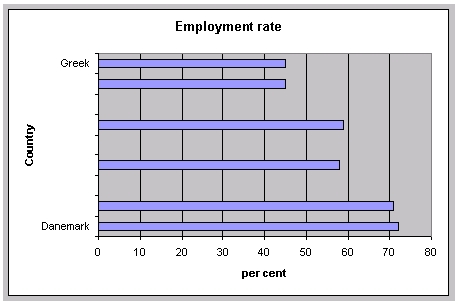
In the EU-Politic there is since 1997 a concept, that’s called „Gender
Mainstreaming“ and is in the Amsterdam-contract arranged and motivated
through the 4. World-Women-Conference in Peking 1995. Gender Mainstreaming
is for equal opportunities between women and men in our society and assist
or make something clear for someone else. Efficient clear questions and
cost benefit analysis could make the discrimination smaller. In the German
Basic fundamental law the “Grundgesetz” in article 3, section 2, clause 1,
“Men and Women are equal”. Particularly with regards to the
emancipation, it’s not only and specificity for women. About statistics
and analysis in healthcare, mobility, career choice and so on. There will
be equal opportunities in all these spaces.
At the last InterGeo (2005) in Stuttgart /Germany, the Working Group
“Women in Surveying” has started a poll. Only 50% of all participants have
heard from Gender Mainstreaming and only 63% of these 50 % could find an
example at their work. The most answers of content with activities were
the city / town planning or law changing. Isn’t it awful to see, that
nobody knows of it although it’s been there for 10 years. That’s a big
deficit of information and knowledge of our life with and between us.
Gender Mainstreaming will be bewaring for discrimination, but also the old
and disabled people play a big role in that theme. An example: What about
pavements? Isn’t it difficult for old people, a mother with a baby
carriage or a disabled person in a wheelchair to get on or off, the
pavement when it’s not flush with the ground. There wasn’t a little chance
for these people to change the side of the street. The same goes for
busses. In Germany we now have often low-floor vehicles.
The international experiences within the FIG (International Federation
of Surveyors) and the Task Force and than Working Group of “Under-Represented
Groups” gave a big impulse for the “Women in Surveying” in
Germany, especially through by my colleague Mrs. Gabriele Dasse as chair
of the FIG Working Work and her engagement in our German association and
network. The FIG “Newsletter” is one of the communication
platforms, which is a service for all interested people. On the
FIG-Congress 1983 in Sofia / Bulgaria there was a Group created with the
title “Women in Surveying”. That was the reason to start the same
in Germany. It was a long journey, but now we are established.
The DVW is one of several German associations for Surveyors. The DVW is
the „Deutsche Verein für Vermessungswesen“. It was established in
1872. 1989, on an annual national meeting of the Surveyors in Stuttgart,
the DVW has opened a new female group with the name of „Women in
Surveying “. 1995 the Group grow up to an own Working Group, the AG
FiV (Arbeitsgemeinschaft Frauen im Vermessungswesen). Since then, the
Group supports all activities around the female surveyors. In 2002 the
women in Surveying are now an official Part of the Working Group 1
“Profession”. A special target of the women from the DVW is aimed in
theory, technical and practiced activities in the area of Geodesy,
Geoinformation and Landmanagement to give information and support. As well
the federation between other clubs or associations is one of the targets
of the women in Surveying. In Workshops we create polls and later the
results will be evaluated, please look at our poll of the Gender
Mainstreaming. On panel discussions and presentations, were highlight
during the last years „Reform of the Curriculum at Universities“, „How
to established an Enterprise“ or „Profession in Change“. That
was presented on the InterGeo, a national annual congress in Germany. In
the frame of the presentation on the InterGeo the women in surveying have
there own booth on the fair. There is a meeting point for everybody, who
have fun to talk with each other, to collect or exchange names, addresses,
information about new jobs or tips and tricks.
The network of the women in Surveying from the DVW, has their
activities in the last few years remarkably increased, one of the reason
is the biggest technology step of the world – the Internet. Well, the
network is the oldest connection for humanity. Latest the mediaeval times
the male doing was so narrow, because the international trading operation
was really fluent. Today it looks a little bit different. The men are who
meet together in a pub or restaurant on a regular’s table, the intern
round table conference, that was the fix point to get in action, to
dispute, to take deals together and handshake for other business
contracts. The Women have recognized that, and they do the same, but not
on that level. The women’s network applies only to the small circular of
the family and the immediate neighbours – only for the social network
around her and the family.
We haven’t recognized the dimension of the network of men for a long
time, but now we are coming! The women in Surveying are a very good mixed
fine group. We have all profession in our network (trainees, technicians,
engineers and professors), over all ages and all are motivated to support
everybody.
Our YAHOO-Group, is a quick and a smooth platform for communication in
our actual life. Most of us around the world have an access to the
internet, so it’s possible for everyone to get in contact. With that
internet operator everybody of the group is flexible, worldwide accessible
and if you want, to change every kind of information. The moderation Forum
is a quick and uncomplicated exchange of practise and knowledge of
profession information and diverse more.
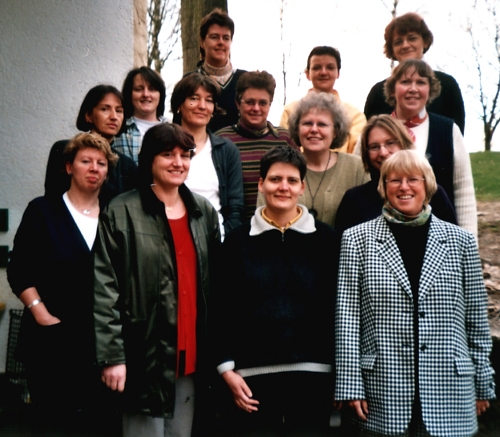 |
Via public relations more tips, tricks and every kind of information
for all members can be exchanged or you get in contact with a person when
you want to share your information. We are since the Internet-Group
started, around 41 registered members and we are growing further. Over the
Internet-Forum an annual working weekend will be organized in Germany. In
the last years we met in Fulda. On that meeting in Fulda, we develop
seminars, special speech themes and working papers. It’s really special
for women and newcomers. You can find the women in Surveying of the DVW
under the link www.dvw.de/frauen or http://de.groups.yahoo.com/group/frauen_im_dvw
see and read more about there activities (only in German). Besides this
annual meeting in Fulda, there’s a female regular’s table. They meet twice
or more a year and sometimes they organize seminars for themselves. The
women are getting a multiple function, so the network lives. Women are so
full of power and energy, that they must use it to support the younger
professionals. They need our help, because the men dominate our big
technical surveyor world. Every woman, if she is either young or old,
stays in a job and is near the top or stays at the beginning of the
career, has with that YAHOO-Group a big partner on her side.
Jennifer Maldar, DVW – German Association of Surveying, Germany
E-Mail: jennifer.maldar@gv.hamburg.de
California State Lands Commission
by Kelly Olin, USA
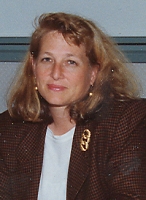 |
The California State Lands Commission (CSLC) dates
back to the original California State Surveyor General’s office. In
1929 the Office of the State Surveyor General and the Department of
State Lands was consolidated inside the Department of Finance and in
1938, pursuant to the State Lands Act of 1938, the legislature created
the State Lands Commission. The Commission is made up of three
commissioners being the Lieutenant Governor, the State Controller, and
the State Director of Finance.
The mission of the CSLC is to protect and manage the sovereign
lands of the State of California for the people of the State of
California. The mission statement reads: |
The California State Lands Commission serves the people of California
by providing stewardship of the lands, waterways, and resources entrusted
to its care through economic development, protection, preservation, and
restoration
The State acquired sovereign ownership of all tidelands and submerged
lands and beds of navigable waterways upon its admission to the United
States in 1850. The State holds these lands for the benefit of all the
people of the State for statewide Public Trust purposes which include
waterborne commerce, navigation, fisheries, water-related recreation,
habitat preservation, and open space. The landward boundaries of the
State’s sovereign interests in areas that are subject to tidal action are
generally based upon the ordinary high water marks of these waterways as
they last naturally existed. In non-tidal navigable waterways, the State
holds a fee ownership in the bed of the waterway between the two ordinary
low water marks as they last naturally existed. The entire non-tidal
navigable waterway between the ordinary high water marks is subject to the
Public Trust Easement. Both the easement and fee-owned lands are under the
jurisdiction of the State Lands Commission. The locations of the ordinary
high and low water marks are often related to the last natural conditions
of the river, and may not be apparent from a present day site inspection.
The Commission has exclusive jurisdiction over all unpatented tide
lands and submerged lands owned by the State and the beds of navigable
rivers, streams and lakes. Since statehood, much of this land has been
granted in trust to municipalities and is used by many for Port purposes.
California also received a grant of the swamp and overflowed lands within
the State. These lands were patented into private ownership for the
purpose of reclamation and cultivation. Again, due to the overwhelming
task of identifying the character of these lands by county surveyors and
the influx of purchasers into California as a result of the discovery of
gold, not all land of this character was apparent then or now.
The Surveying staff of the Commission works within the Civil Service
class of Boundary Determination Officer. The entry level classification is
known as a Boundary Determination Technician and requires a minimum of six
units of course work in surveying or a four year degree in a related
field. The Assistant level requires a Land Surveyor in Training
Certificate and the Associate level a California Professional Land
Surveyor’s License. The more difficult work is done by Senior Boundary
Officers and the group is managed by a Supervising Boundary Determination
Officer.
Frequently the CSLC is called upon to settle a title dispute over a
parcel of land, often at the beginning of potential development. A dispute
is often best resolved via a title settlement agreement or possibly a
quiet title action. The Boundary Determination Officer researches the
facts of the case using available historic records, maps, photographs, and
field notes. He or she also views historic topographic and hydrographic
surveys to establish the original physical limits of the public trust
lands. Once the extent of sovereign land is determined the Boundary
Officer works with an appraiser and attorney to determine the value of the
potential claim.
If a dispute results in litigation, the Attorney General’s office acts
as the litigator on behalf of the agency. More often the emphasis is to
negotiate a settlement with the opposing party using either a Boundary
Line Agreement or an Exchange Agreement, which will allow use or
development of the lands in question while protecting the public trust
interest. The settlement allows the sovereign interest in a parcel no
longer useful for trust purposes to be exchange for a parcel of equal or
greater value with potential trust value, or allows funds to be put into
the Kapilof Land Bank for future purchase of lands that would be useful
for trust purposes. The Boundary Officer is then called upon to prepare
land descriptions and plats and possibly survey the settlement parcels for
the transaction.
The CSLC is the repository for all the records of the California State
Surveyor General’s office as well as the Board of Tideland Commissioners (BTLC).
The surveyor, George Allardt, hired by the BTLC to survey the tide and
marsh lands in San Francisco Bay, date back to the 1860’s. The CSLC has
Allardt’s original field books and also all of the maps showing the salt
marsh and tidelands in the San Francisco Bay. The agency also has original
swamp land surveys and tideland surveys and much of the historical
Hydrographic and Topographic Surveys of the California Coast. Included in
the library is an index of aerial photography, representing in-house
copies of photography dating back to 1928 and information on photography
kept elsewhere by other agencies.
Over the years the Boundary staff of the Commission has been reduced by
approximately 80%. With the ever increasing demands on California’s
resources, the task of responsibly managing these lands has become
challenging. Water boundaries are a unique field in the surveying
profession and the amount of time required to learn the specialty is
approximately 5 years. Given the reduction in the number of licensed
surveyors and the past salary discrepancies, hiring has been a challenge.
Many of the “old timers” have retired and the institutional knowledge has
been lost. It is not unlike many of our contemporary surveying companies,
where the practice of mentoring and learning the “art” of surveying is
going by the wayside.
Kelly Olin, P.L.S. 5166 recently retired as the Supervising
Boundary Determination Officer for the California State Lands Commission.
Her career included 29 years at the Commission is which she held all of
the positions within the Boundary Classification. She is an active member
of ACSM and currently serves as the Chair of the CARE Committee. She
received her Certificate in Surveying, AA Degree from Sacramento City
College, and has a Degree in Public Administration from the University of
San Francisco.
|
Editor: Chair of the Joint Commission Working Group
on Under-represented Groups in Surveying
Ms. Gabriele Dasse,
Kleinfeld 22 a, D-21149
Hamburg, Germany
E-mail: g.dasse@gmx.de
4/06, month of issue:
December
© Copyright 2006 Gabriele Dasse.
Permission is granted to photocopy in limited quantity for educational
purposes.
Other requests to photocopy or otherwise reproduce material
in this newsletter should be addressed to the Editor.
|
|





























